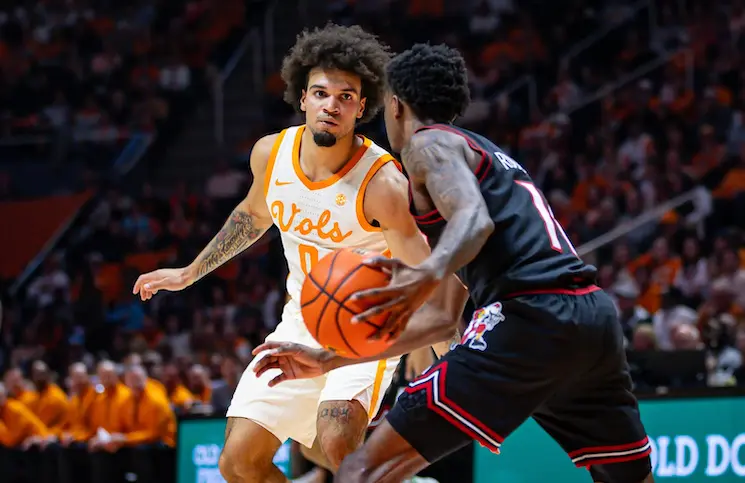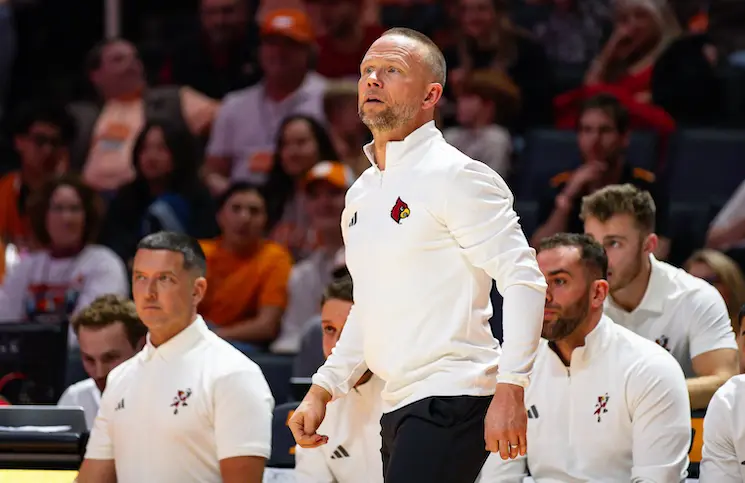
This Week in UT Sports History is a weekly column written by RTI contributor Lexie Little
Football time in Tennessee commences in less than two weeks, and fans prepare to fill Neyland Stadium for Jeremy Pruitt’s second year at the helm. This year marks major milestones for the university and the Pride of the Southland Marching Band. The university celebrates its 225th anniversary while the Pride celebrates 150 years of Big Orange tradition.
To set the tone, take a look back at a few stories woven in the same narrative in “This Week in UT Sports History.”
Aug. 22, 2003
Tennessee’s athletic teams earned their monikers in honor of the volunteer soldiers who fought under the command of Andrew Jackson during the War of 1812 and subsequent citizen-soldiers who volunteered for the army during the Mexican-American War. (The Atlanta Journal purportedly first called the ragtag football team as such following a match-up against Georgia Tech in 1902).
Each year, student-athletes volunteer their talents to compete on national stages for their school and state. Many embrace the name long after their time at the university, and a few truly honor volunteer tradition. A few like former linebacker Greg Johnson.
Johnson returned home from military duty in Iraq during the summer of 2003, and he returned to Rocky Top for interviews published this week 16 years ago. Johnson, whose father and brother both played for Tennessee, carried the fight to Kuwait and Iraq as a captain in the Marines—remembering the Volunteers who came before him like Gen. Robert Neyland.
“You fight like you train and you train like you fight,” Johnson said in an interview with utsports.com. “I heard a lot about Gen. Neyland and his beliefs about military principles and football, but it never hit me how it really applied to what we were doing.”
The discipline he practiced as a member of Phillip Fulmer’s squads (1993-96) applied to his approach during his service, noting training must mirror what is to come on the field. His training led to successful missions in which his men returned alongside him, having worked together as a team.
“Greg Johnson is a credit to our football program, the University of Tennessee and the entire state,” Fulmer said in the same story from UT Athletics. “I’m proud of what he’s done for our country. What he has accomplished is a truly inspirational story.”
Johnson’s father Carl played at Tennessee from 1969-72 and his brother Neil followed in 1998-99. His roommate at UT also played a little football: Peyton Manning.
Aug. 25, 2006
Alumni often embrace the Volunteer moniker by giving back to the University System of Tennessee. Donations reached new heights during the 2018-19 fiscal year with $173,746,126 donated to the flagship campus in Knoxville. However, some of the most generous donors do not hold degrees from the university. This week in 2006, one such donor, Cleveland (Tennessee) native Brenda Lawson, pledged a total of $10 million to one of the largest financial campaigns to support Tennessee campuses.
Lawson’s donations culminated in the creation of a revamped basketball practice facility and eventually, the Brenda Lawson Athletic Center, a $2.5 million project serving as a “front door” to the athletic department and adjoining football facilities. Other funds provided support for renovations to Neyland Stadium, endowments at UT-Knoxville and endowments at UT-Chattanooga nearer to Lawson’s home.
“Although I am not a graduate of UT, I became very interested in the university when I began coming to football games,” Lawson said in the initial news release. “After we sold our first business, we started looking for areas to give back to the community, and education became my passion. I’m always looking for ways to influence young women to pursue their dreams.”
The women’s basketball court within Pratt Pavilion is named in Lawson’s honor as a result of her desire to inspire young women and contributions to their success. She shared a vision of advancing women much like Tennessee’s then head coach, Pat Summitt.
“One of my greatest joys has been in inspiring young women to greater levels of accomplishment,” Summitt said. “Having the name of one of Tennessee’s great philanthropists, who just happens to be a woman, on the Lady Vol practice court should be another inspiration to young women.”
Lawson champions education at higher learning across the state. In 2017, Cleveland State Community College named Lawson the “Community First Person of the Year.” As an entrepreneur and business leader, Lawson continues to use her capital to give back to her community and its future, supporting programs like the Bradley Cleveland Public Education Foundation and other programs targeting education, business and community development.
The Brenda Lawson Athletic Center sits across from Pat Summitt Plaza on Lake Loudon Boulevard at the University of Tennessee.
Aug. 20, 1973
Forty-six years ago this week, a Tennessee legend opened his eyes to the prospect of a life in sports, changing the trajectory of both he football and baseball programs. Well, sort of. That day, he simply opened his eyes for the first time.
Todd Helton, born Aug. 20, 1973, played football and baseball at the University of Tennessee from 1993 until 1995 when he was selected eighth overall in the MLB Draft. The first baseman spent 17 seasons as a career player with the Colorado Rockies. During his professional career, Helton earned four Louisville Slugger Silver Slugger Awards, three Rawlings Gold Glove Awards, and five All-Star recognitions. The Rockies retired his jersey in 2014, the first player in the organization to garner the honor.
Forgoing a chance to play professionally in the San Diego Padres organization in 1992, Helton decided to accept an athletic scholarship for Tennessee to play both football and baseball. (The Padres drafted Helton in the second round of the 1992 MLB Draft after he posted a .655 batting average as a senior at Central High School in Knoxville). A quarterback, Helton spent his football days playing backup to Heath Shuler and Jerry Colquitt until the latter tore knee ligaments in the 1994 season opener. A top baseball prospect, Helton gave little thought to his secondary sport.
“I wasn’t expecting to go in when I did,” Helton said as reported by the South Florida Sun Sentinel. “I was just over at the water bucket when he got hurt, doing what I do, playing with the football or something.
“Then he got hurt and you realize you’re in there, you’re the man and you’ve got to make things happen.”
However, his chance to lead the program ended quickly, suffering a knee injury against Mississippi State after only three weeks as a starter. The man behind him on the bench would not relinquish the starting job; a true freshman by the name of Peyton Manning took the field and the record books by storm.
Without Helton’s injury, the stories of both athletes might have ended differently. However, both their narratives led them to Denver, where Manning led the Broncos to a Super Bowl as Helton retired from major league play. The knee injury might have stopped Helton’s football career, but his time on the diamond remained far from over with a .370 batting average including 38 home runs and 238 RBI as a Vol. He pitched 193 innings for 172 strikeouts on his way to becoming a two-time First Team All-American.
Following his retirement from the MLB in 2013, former Tennessee Baseball coach Dave Serrano invited Helton to take a volunteer position as director of player development in 2017. According to Tennessee Athletics, role responsibilities include maintaining alumni relations, on-campus recruiting efforts and advising for players wishing to make informed decisions about professional baseball careers.
Though he has faced problems off the field, Helton remains one of the most prominent athletes to represent the university, particularly in baseball.




